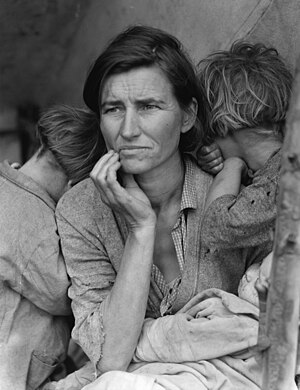Second level of meaning: Subject
| Art Appreciation and Techniques (#ART100) | |
|---|---|
| How art speaks: Finding meaning | Overview | Introduction | How we see | First level of meaning: Formal | Second level of meaning: Subject | Third level of meaning: Context | Fourth level of meaning: Iconography | Critical perspectives | Summary |
There are specific categories of ideas that people recreate that have been represented in art over time. These ideas, however, change over time. Many of them are present in some cultures, but never present in others. This disparity gives us another place to look for meaning when we approach differences in representation. But generally these categories of ideas (sometimes called subjects) can also be called a genre of art: a fairly loose category of images that share the same content. Here is a brief list of the type of genre that you may see in a work:
- landscape
- still life
- portrait
- self-portrait
- allegory: representing a mythological scene or story
- historical: actual representation of a historic event
- religious: two forms: religious representation or religious action
- daily life: sometimes also called genre painting
- nude: male nude and female nude are separate categories
- political: two forms: propaganda and criticism
- social: work created to support a specific social cause
- power: work created to connect to specific spiritual powers
- fantasy: work created to invent new visual worlds
- decoration: work created to embellish surroundings
- abstraction: work whose elements and principles are manipulated to alter the subject in some way
What you will discover when you think about some of these subjects is that you may already have a vision of how this subject should appear. For example: visualize a portrait or self-portrait. You can see the head, probably from the shoulders up, with little background, painted fairly accurately. Look at these portraits and see that this is moderately true; though some works may change and surprise you.
Some works of art can be part of a certain genre by using metaphor: one image that stands for another. A good example is this quilt by Missouri Pettway from Gees Bend, Alabama. Made of strips of old work clothes, corduroy and cotton sacking material, it becomes a portrait of the artist’s husband. Missouri's daughter Arlonzia describes the quilt:
| “ | It was when Daddy died. I was about seventeen, eighteen. He stayed sick about eight months and passed on. Mama say, 'I going to take his work clothes, shape them into a quilt to remember him, and cover up under it for love.' | ” |
The woman’s face speaks of worry and desperation about how to provide for her children and herself. San Francisco photographer Jim Thirtyacre's image Working Mother from 2009 (image unavailable) reflects this same sentiment but through the context of the first major economic crisis of the twenty first century.
It is also important to note that many cultures do not use particular genre, for example portraiture, in their art. See the image of figures created by the ancient pueblo peoples of western United States shown below (additional images). For some cultures the representation of an actual human face is dangerous and can call up spirits who will want to live in the image: so their masks are extremely stylized while still face-like. Traditional Islamic images are forbidden to depict figures and other material objects. In their place artists use the genre of decoration.As we explore the themes selected for this course, you will see how the subject categories change over time, over cultures, and how their meaning changes.

